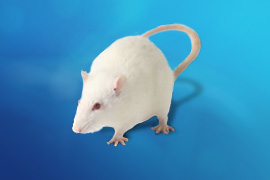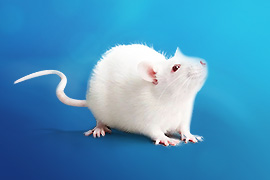
Spontaneous type II diabetes GK rats progress extremely similarly to human non-obese type II diabetes.
GK rats have normal blood glucose levels during the neonatal period and do not exhibit hyperglycemia within 3 weeks after birth, but develop into dominant type 2 diabetes in adulthood.
Its main features include impaired insulin secretion, reduced number of pancreatic β-cells, mild fasting hyperglycemia, significant postprandial hyperglycemia, increased hepatic glycogen generation, hyperinsuline
GK rats are non-insulin dependent, non-obese spontaneous type II diabetes animal models used for research on the pathogenesis of diabetes.
After the onset of diabetes, there is a rapid increase in blood glucose and a decrease in insulin secretion, followed by complications such as retinopathy, microvascular disease, neuropathy, and kidney disease. Unlike other rodent models of type II diabetes, GK rats are non-obese.
-
 Wistar RatDeveloped by the Wistar Institute in the United States in 1907. In 2019, SpePharm (Beijing) Biotechnology Co., Ltd. introduced breeding from the National Rodent Laboratory Animal Seed Center.More
Wistar RatDeveloped by the Wistar Institute in the United States in 1907. In 2019, SpePharm (Beijing) Biotechnology Co., Ltd. introduced breeding from the National Rodent Laboratory Animal Seed Center.More -
 ICR miceIn 1926, the Rockfeller Institute of the United States introduced albino mouse from Switzerland to breed Swiss mouse; in 1948, it was introduced by the Philadelphia Cancer Institute and bred Ha/ICR. In 1973, it was introduced into China and in 2011, SPF (Beijing) Biotechnology Co., Ltd. introduced it from the National Rodent Experimental Animal Seed Center and bred it.More
ICR miceIn 1926, the Rockfeller Institute of the United States introduced albino mouse from Switzerland to breed Swiss mouse; in 1948, it was introduced by the Philadelphia Cancer Institute and bred Ha/ICR. In 1973, it was introduced into China and in 2011, SPF (Beijing) Biotechnology Co., Ltd. introduced it from the National Rodent Experimental Animal Seed Center and bred it.More








